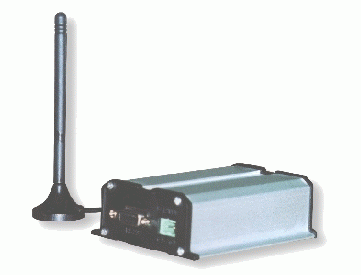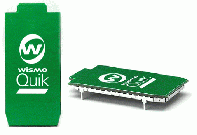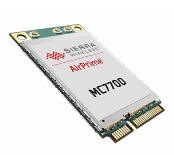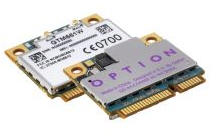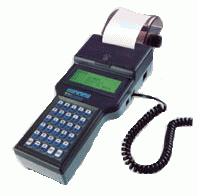- Compared to 3G modules, 4G LTE modules offer higher downlink and uplink data rates. See data rate information below.
- 4G LTE modules will work with very low latencies – less than 5 ms for u-plane and less than 100 ms for c-plane
- 4G LTE modules supports packet-switched traffic only, so communication is all IP-based.
- For network operators, LTE networks offers high spectral efficiency.
4G LTE Standards: LTE standard is controlled by the 3rd generation partnership project (3GPP). LTE provides an evolutionary path for both CDMA and GSM networks and it overlays upon existing 3G networks. LTE standard is based on orthogonal frequency division multiple access (OFDMA) solution. Wider bandwidth solution boots data capacity in high0demand dense urban areas.
4G LTE Speed: Data rates of 4G LTE modules depends on the network conditions and performance of the device. The actual LTE speeds are around 6-10 Mpbps (Downlink) and 5-8 Mbps (Uplink).
LTE Speed
| LTE | Downlink Speed Peak | Uplink Speed Peak |
|---|---|---|
| Cat 1 | 10 Mbps | 5 Mbps |
| Cat 2 | 50 Mbps | 25 Mbps |
| Cat 3 | 100 Mbps | 50 Mbps |
| Cat 4 | 150 Mbps | 50 Mbps |
| Cat 5 | 300 Mbps | 75 Mbps |
4G LTE Frequency Bands: 4G LTE modules can operate on following bands. The band configurations of the modules are dependent on teh carrier network.
LTE FDD Frequency Bands
| LTE Band Number | Uplink (MHz) | Downlink (MHz) |
|---|---|---|
| 1 | 1920 - 1980 | 2110 - 2170 |
| 2 | 1850 - 1910 | 1930 - 1990 |
| 3 | 1710 - 1785 | 1805 -1880 |
| 4 | 1710 - 1755 | 2110 - 2155 |
| 5 | 824 - 849 | 869 - 894 |
| 6 | 830 - 840 | 875 - 885 |
| 7 | 2500 - 2570 | 2620 - 2690 |
| 8 | 880 - 915 | 925 - 960 |
| 9 | 1749.9 - 1784.9 | 1844.9 - 1879.9 |
| 10 | 1710 - 1770 | 2110 - 2170 |
| 11 | 1427.9 - 1452.9 | 1475.9 - 1500.9 |
| 12 | 698 - 716 | 728 - 746 |
| 13 | 777 - 787 | 746 - 756 |
| 14 | 788 - 798 | 758 - 768 |
| 15 | 1900 - 1920 | 2600 - 2620 |
| 16 | 2012 - 2025 | 2585 - 2600 |
| 17 | 704 - 716 | 734 - 746 |
| 18 | 815 - 830 | 860 - 875 |
| 19 | 830 - 845 | 875 - 890 |
| 20 | 832 - 862 | 791 - 821 |
| 21 | 1447.9 - 1462.9 | 1495.5 - 1510.9 |
| 22 | 3410 - 3500 | 3510 - 3600 |
| 23 | 2000 - 2025 | 2180 - 2200 |
| 24 | 1625.5 - 1660.5 | 1525 - 1559 |
| 25 | 1850 - 1915 | 1930 - 1995 |
LTE TDD Frequency Bands
| LTE Band Number | Frequency (MHz) |
|---|---|
| 33 | 1900 - 1920 |
| 34 | 2012 - 2025 |
| 35 | 1850 - 1910 |
| 36 | 1930 - 1990 |
| 37 | 1910 - 1930 |
| 38 | 2570 - 2620 |
| 39 | 1880 - 1920 |
| 40 | 2300 - 2400 |
| 41 | 2496 - 2690 |
| 42 | 3400 - 3600 |
| 43 | 3600 - 3800 |
4G LTE Module Form Factors: Since carriers are rolling out 4G LTE networks slowly, 4G LTE modules are primarily used within laptops and tablet devices. For laptops, PCIe is the most common LTE module form factor. For tablet LGA form factor is one option, but many tablet vendors are directly integrating 4G LTE chips on their designs. The adoption of 4G LTE modules in the M2M segment will happen over time as LTE networks offers higher bandwidth and lower latencies.
4G LTE Module Interfaces: Interfaces are capabilities supported by the modules through hardware and/or software. Some of the common interfaces supported on 4G LTE modules are,
- Power : Power interface is mandatory for all modules and the supply ranges from 3.0V – 4.5V.
- USB (Universal Serial Bus): USB is usually the primary data interface used on 3G modules since it supports higher data rates.
- UICC (Universal Integrated Circuit Card): GSM-based 4G LTE modules will have UICC interface which is based on IS0 7816-3.
- Antenna: Antenna connectors are generally available on-board the 4G LTE modules. To improve receiver performance, a diversity antenna connector is also sometimes available on the modules.
- GPS (Global Positioning System): Many of the 4G LTE modules have integrated GPS solution. GPS antenna port may be on a separate port or shared with the diversity antenna port.
- PCM (Pulse Code Modulation): PCM interface in 3G modules is used for digital audio transfer.
- Analog Audio Interface: For devices that require voice support, 3G modules will provide analog audio interfaces.
4G LTE Module Certification
Before the 4G LTE module can be commercially used with in a device, it has go through several certification process.
- Global certification Forum (GCF) : GCF enables certification of any mobile device based on 3GPP technologies. GCF certification is supported by leading operators from every region of the world. GCF approval requires both conformance lab testing and field trials.
- PTCRB : PTCRB is the North American operators certification body. It provides a framework within which device certification can take place for members of teh PTCRB.3G modules are tested at PTCRB accredited labs which manage the certification process.
- FCC : In order to obtain a modular approval teh FCC has identified requirements that must be addressed in the application for equipment authorization. These requirements are specified in this FCC document.
- Network Operator Certification: In addition to PTCRB/GCF & FCC, the module should also be certified by the network operator. In fact, the network operators might have industry certifications as a pre-condition for lab entry.





